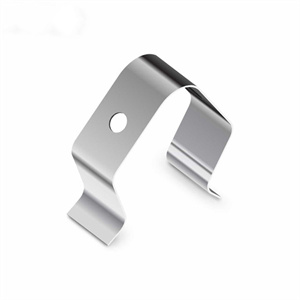The choice of tempering temperature for spring steel clips also depends on the specific type of spring steel used and the required mechanical properties. The tempering temperature has a significant impact on the performance of spring steel, as it can adjust the hardness, toughness, and elasticity of the steel.
Generally speaking, the tempering temperature range of spring steel can vary from lower (e.g. 200 ° C to 300 ° C) to higher (e.g. 400 ° C to 500 ° C). A lower tempering temperature is usually used to maintain higher hardness and elasticity, while a higher tempering temperature is used to improve the toughness of steel and reduce internal stress.
Here are some common considerations:
Chemical composition of steel: Spring steel with different chemical compositions may exhibit different performance at the same tempering temperature. Therefore, it is necessary to determine the optimal tempering temperature based on the specific chemical composition of the spring steel clip.
Required mechanical performance: The purpose of the spring steel clip determines the required mechanical performance. For example, if the spring steel clip needs to withstand high-frequency bending and recovery, it may need to maintain high hardness and elasticity; If it needs to maintain integrity under impact loads, it may require higher toughness.
Heat treatment process: Tempering is a part of the heat treatment process, usually used in conjunction with quenching. The cooling rate and method after quenching can also affect the selection of tempering temperature.
Size and shape: The size and shape of the spring steel clip may also affect the selection of tempering temperature. Large or complex spring steel clips may require longer tempering time to ensure uniform performance.
Production requirements: Factors such as cost, production cycle, and quality control may also affect the selection of tempering temperature for spring steel clips.
To determine the optimal tempering temperature for the spring steel clip, a series of experiments and tests are usually required. These tests may include hardness testing, tensile testing, impact testing, etc. to evaluate the performance of spring steel clips at different tempering temperatures. Based on the test results, the optimal tempering temperature can be selected to ensure that the spring steel clip has the required mechanical properties and a longer service life.
